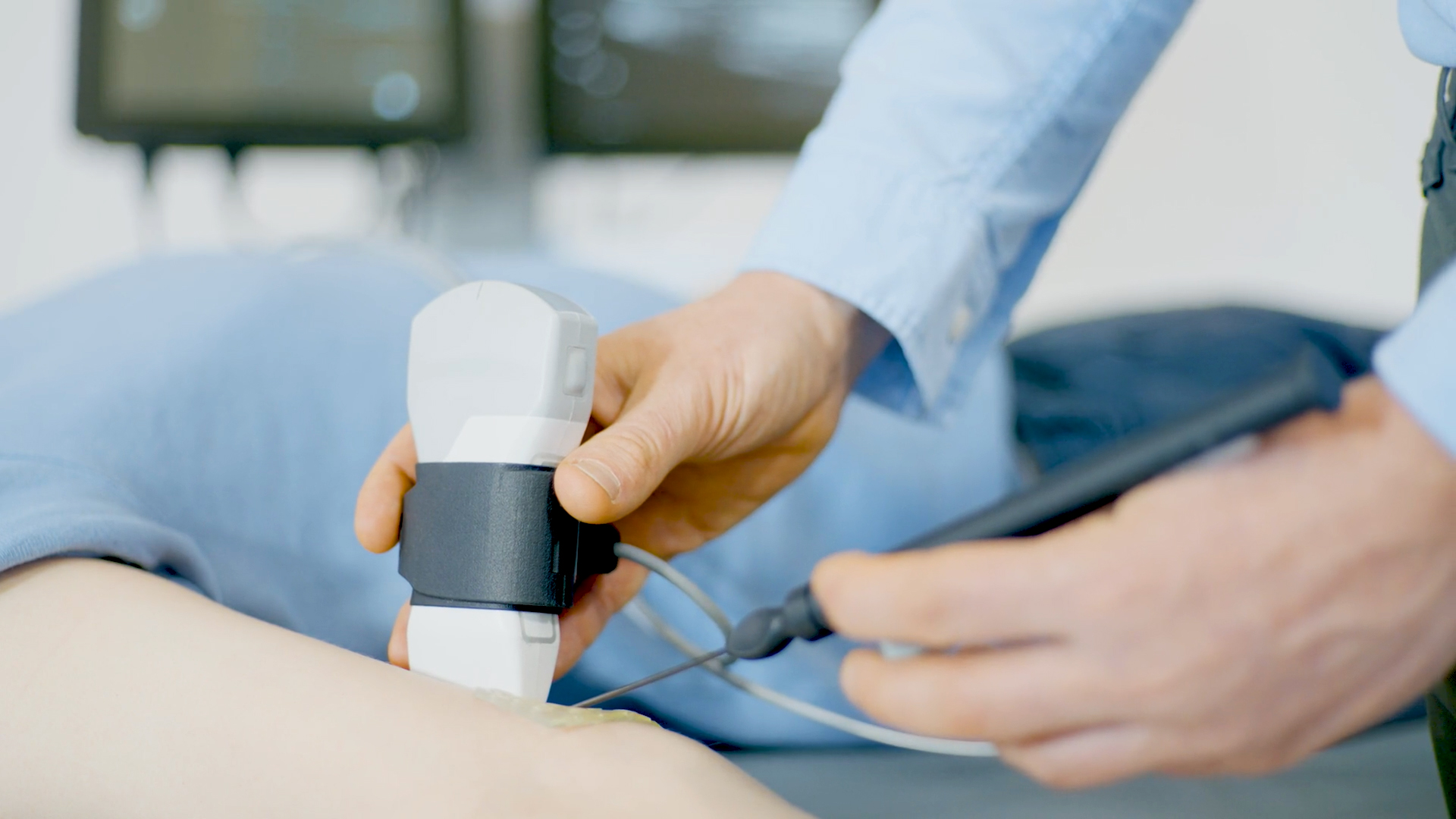
NHS Education for Scotland Invests in NeedleTrainer and ScanNav Anatomy PNB to Deliver Enhanced ‘Classroom to Clinic’ Learning
NHS Education for Scotland (NES) is an education and training body and a national health board within the National Health Service (NHS) Scotland, UK. NES aims to lead the design and delivery of high-quality technology enhanced learning for the health and social care workforce across Scotland.
Dr Ed Mellanby is the Simulation Associate Postgraduate Dean for Scotland. He described that “It is a huge challenge to consistently meet the requirements of training in regional anaesthesia in a safe and reliable way to all trainees in Scotland. We are developing a national approach to simulation training in Scotland, with the aim of sharing resources and expertise across the country in order to improve quality and equitability of access. This technology aligns with that ambition and with both patient and curriculum requirements. I am really excited to see how this can reduce the variability in practice and training, and witness the positive impact on performance that we believe this will produce.”
Dr Alasdair Taylor (Consultant Anaesthetist, Ninewells Hospital, Dundee) is working closely with Dr Melanby to deliver this NES investment. Alasdair explained “as a team, we want to increase the delivery of safe and efficacious ultrasound guided regional anaesthesia (UGRA) to patients in Scotland as the potential benefits are well known. When performed well, patients benefit from reduced morbidity, improved pain scores, and a reduced opiate requirement and the consequent side effects. Organisations can benefit from greater theatre efficiency, and shorter length and cost of inpatient stay. Also, with the long-term aim of performing more awake regional anaesthesia, we can achieve a reduced carbon footprint for surgical procedures.”
However, the risks of poorly performed UGRA and ultrasound-guided needle insertion are well documented, including damage to nerves that can lead to chronic pain, loss of sensation and muscle weakness. Poor identification of structures on ultrasound can lead to needle trauma (such as to blood vessels, the lung, bowel and kidney).
For the reasons above, ultrasound-guided needle insertion is now a key competency requirement for multiple specialties including Anaesthesia, Intensive Care Medicine and Emergency Medicine (e.g., UGRA and central line insertion), and the Royal College of Anaesthesia 2021 training curriculum places a greater emphasis on UGRA training than ever before.
Alasdair continued “We are required to train doctors so they are ready for independent practice, but we need to train safely and effectively whilst mitigating risk to patients.”
This investment in novel artificial intelligence (AI)/augmented reality (AR) simulation equipment is being used to establish a national training resource to deliver teaching of this core skill as part of Stage 2 anaesthetic training in Scotland. Alasdair explained, “the key challenge of learning a complex procedure in a complex environment is managing cognitive load. This advanced AI/AR simulator allows all factors to be controlled and simplified, to improve communication and create optimal learning conditions specific to the individual, offering huge potential to impact postgraduate anaesthesia training, as well as other medical specialties and undergraduate training in Scotland.”
Intelligent Ultrasound’s Classroom to Clinic package, incorporating NeedleTrainer and ScanNav Anatomy Peripheral Nerve Block (PNB), is designed to meet the two key challenges of UGRA: ultrasound image acquisition/interpretation and ultrasound-guided needle insertion to deposit local anaesthetic at a target site. As a package, this provides three clear educational benefits; increased efficiency whereby education can be carried out in a cost-effective and scalable manner; enhancing educational outcomes; and transforming education design and delivery.
Using a combination of AI, to assist with identification of anatomical structures on ultrasound, and AR, for holographic representation of needles on real-time ultrasound feed, NeedleTrainer allows high-fidelity practise of ultrasound-guided needle insertion on humans, using genuine ultrasound images, but with no risk of harm to patients. Alasdair commented “it is the closest possible representation of the actual procedure without having the risk associated with inserting a needle into a real patient. There is no other resource currently available that uses this technology and offers this benefit.”
Following use of NeedleTrainer in the classroom, ScanNav Anatomy PNB will be used to translate learning from a simulation setting into clinical practice. Alasdair commented “ScanNav is a superb tool that can be used in clinical practice as an individual gains competence in regional anaesthesia. For the novice under direct supervision the anatomical highlighting undoubtedly improves the learning conversation. At an intermediate level and beyond, ScanNav helps to optimise the block view, improves block safety and gives confidence to the user promoting independence.”
The platforms will be put to good use at the School of Medicine, University of St Andrews where Dr Alasdair Taylor and co-director Dr James Bowness will use NeedleTrainer as part of their two-day Regional Anaesthesia: Plan A Blocks course. NeedleTrainer was the teaching centrepiece of the pilot course in June 2023– the team’s start and end of course assessment demonstrated a 37% mean improvement in expert rating of delegate performance of simulated UGRA, a 77% mean improvement in delegate confidence, and 15% increase in ability to accurately place the simulated needle.
NES joins its counterpart body in Wales (HEIW), who invested in Intelligent Ultrasound platforms in 2022 to help meet curriculum changes and provide more safe, effective learning opportunities in ultrasound-guided interventional procedures.
Find out more about our platforms for regional anesthesia.